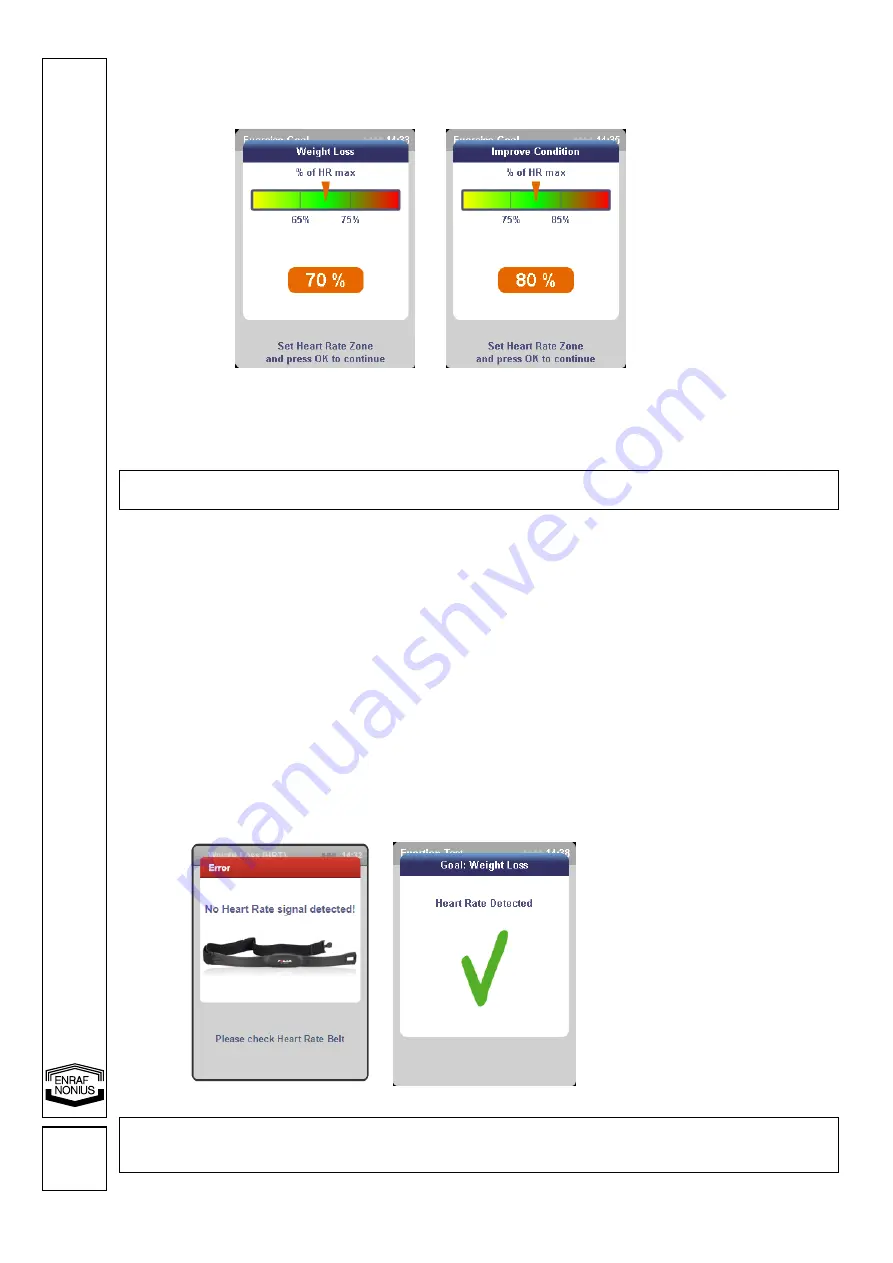
36
EN109-1665751-44
Generally speaking, the indicator should not be adjusted as the age of the user has already been entered in a
previous screen and the displayed percentage of 70% (weight loss) and 80% (condition improvement) is in
accordance with the ACSM guidelines.
Figure 22
Figure 23
* As defined by the American College of Sports Medicine (ACSM) in "Guidelines for Exercise Testing and Prescription".
Example: for a 40-year old user who has selected the HRT
programme ‘weight loss’ (in this case, the indicator will be at 70%), a
lower limit of 117 bpm will be used. This corresponds to 65 per cent of the max. HR and is calculated as follows: (220-40)*.65=117.
The upper limit of 75% corresponds to a target heart rate of 135 bpm.
Comment: the width of the zone is always kept at 10%.
Conclusion: if the indicator is set to 65%, the zone will be between 60% and 70%.
We therefore refer to the heart-rate value between the minimum and maximum selected heart rate as the
heart-rate zone. The HRT programmes consist of a warm-up, interval training and a cool-down. During the
warm-up, the treadmill will start at a speed of 2 km/h and the heart rate will gradually be increased to the lower
limit of the zone. After the warm-up, the treadmill will automatically accelerate to ensure that the user reaches
the desired heart-rate zone.
If the maximum selected speed has been reached but the user is not yet in the heart-rate zone, the inclination
will automatically increase. If the heart-rate zone is exceeded during the training session, the inclination will
automatically be decreased and the speed reduced, placing less strain on the user and allowing the heart rate
to fall. In principle, to use an HRT programme without an incline, the maximum speed must be set at maximum
(i.e. 18 km/h). The programme will then mainly be controlled by speed adjustments.
The HRT programme ends with a cooling-down phase, during which the heart rate is brought down to the lower
limit of the zone once again.
If no heart-rate signal is detected during the training, a message will appear on the display (see figure 24). As
soon as the heart-rate signal is detected once again, a message (figure 25) will first appear on the screen, after
which the current heart rate will be shown on the display as normal.
If no signal is received for 30 seconds, the speed will drop back to 2.0 km/h.
After 2 minutes without a signal, the training will come to an end.
Figure 24
Figure 25
Comment: do not enter an excessively high speed. You must be certain that the selected speed can be
reached without the heart rate increasing too quickly. In a medical environment, the supervisor must
ensure that this is adhered to.
















































